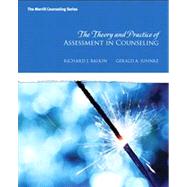Richard S. Balkin and Gerald A. Juhnke have written Theory and Practice of Assessment in Counseling with counseling and psychotherapy students in mind. Unique to the marketplace, the authors keep their focus on the practical, the application of the theoretical and measurement concepts of counseling assessment, by presenting a unique new guide for administering, scoring, interpreting, and communicating assessment results. The conversational tone of writing will engage readers and put them at ease with the mathematical concepts and statistics involved. By focusing on the clinical examples and showing how each type of assessment may be utilized in various settings, the text provides an opportunity to view assessment as an integral part of the counseling process, rather than merely a specialization of counseling. Practical and modern, with the most current assessment information available upon publication, the text covers the most recent revisions of assessments, with modern theories on intelligence and ability testing addressed. This is the only assessment in counseling text on the market that introduces two case studies and follows them throughout, and covers accountability, as well. The practicality element of this text is like none other, as students will get to experience assessment in action and learn how to interpret and write reports for each type of assessment presented.








